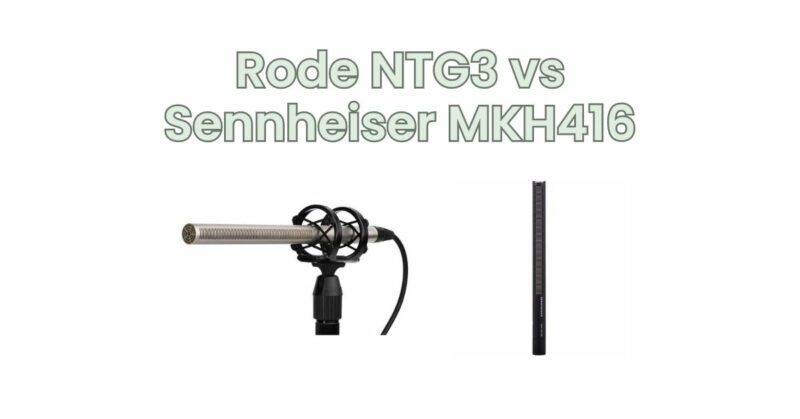Shotgun microphones are widely used in film, television, and broadcast industries for capturing high-quality audio in various recording scenarios. The Rode NTG3 and Sennheiser MKH416 are two popular choices that have gained recognition for their exceptional performance and reliability. In this article, we will compare the Rode NTG3 and Sennheiser MKH416, highlighting their key features, sonic characteristics, and helping you determine which microphone is best suited for your recording needs.
- Rode NTG3:
- Sennheiser MKH416:
Rode NTG3: The Rode NTG3 is known for its high sensitivity and low self-noise, making it an ideal choice for capturing clean and detailed audio. Here are some key features of the Rode NTG3:
- Sound Quality: The NTG3 offers a natural and transparent sound reproduction with a wide frequency response. It captures audio with exceptional clarity and accuracy, making it suitable for a variety of applications such as film production, broadcast, and outdoor recordings. Its low self-noise ensures pristine audio capture even in quiet environments.
- RF-Bias Technology: One of the standout features of the NTG3 is its RF-bias technology. This design feature ensures excellent resistance to high humidity and adverse weather conditions, making it a reliable choice for outdoor recording in challenging environments.
- Robust Construction: The NTG3 is built with durability in mind. It features a rugged metal housing and a double-mesh grille that provides protection against wind noise and handling vibrations. This makes the microphone suitable for demanding production environments.
Sennheiser MKH416: The Sennheiser MKH416 is widely regarded as a go-to shotgun microphone for professional audio applications. Here are some key features of the Sennheiser MKH416:
- Sound Quality: The MKH416 delivers a natural and transparent sound reproduction with excellent off-axis rejection. It captures detailed audio with a balanced frequency response, making it well-suited for dialogue recording, voiceovers, and outdoor applications. Its low self-noise ensures pristine recordings in quiet environments.
- RF Interference Immunity: The MKH416 is designed with high RF interference immunity, allowing it to perform exceptionally well in challenging electronic environments. This makes it a reliable choice for film and television production, where wireless devices and other electronics may be present.
- Robust Build and Reliability: The MKH416 features a rugged metal construction, making it durable and suitable for use in demanding production environments. Its moisture-resistant design ensures consistent performance in humid conditions.
Choosing the Right Microphone: When deciding between the Rode NTG3 and Sennheiser MKH416, consider the following factors:
- Sound Preference: Both microphones offer transparent and detailed sound reproduction, but they may have slightly different tonal characteristics. The NTG3 is known for its slightly warmer sound, while the MKH416 delivers a more neutral and balanced response. Consider the sound signature that aligns with your recording applications and personal preferences.
- Environmental Considerations: If you plan to record in challenging outdoor environments with high humidity or adverse weather conditions, the NTG3’s RF-bias technology may provide added reliability. However, the MKH416’s high RF interference immunity makes it a suitable choice for electronic-heavy environments.
- Budget: Budget is an important consideration when investing in a professional shotgun microphone. The Sennheiser MKH416 is typically priced higher than the Rode NTG3. Evaluate your budget and weigh it against the overall features and performance offered by each microphone.
Both the Rode NTG3 and Sennheiser MKH416 are respected shotgun microphones that deliver exceptional sound quality and reliability. Consider your specific recording needs, sound preferences, and budget to make an informed decision. Regardless of your choice, both microphones have proven their worth in professional audio production and will undoubtedly elevate the quality of your recordings.

